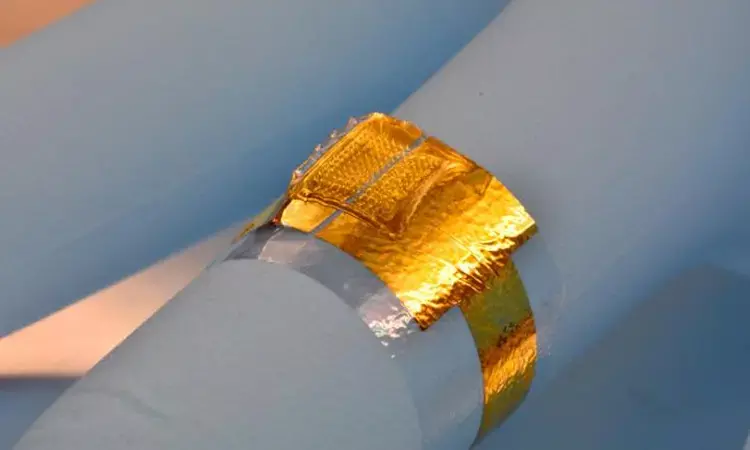- Home
- Medical news & Guidelines
- Anesthesiology
- Cardiology and CTVS
- Critical Care
- Dentistry
- Dermatology
- Diabetes and Endocrinology
- ENT
- Gastroenterology
- Medicine
- Nephrology
- Neurology
- Obstretics-Gynaecology
- Oncology
- Ophthalmology
- Orthopaedics
- Pediatrics-Neonatology
- Psychiatry
- Pulmonology
- Radiology
- Surgery
- Urology
- Laboratory Medicine
- Diet
- Nursing
- Paramedical
- Physiotherapy
- Health news
- Fact Check
- Bone Health Fact Check
- Brain Health Fact Check
- Cancer Related Fact Check
- Child Care Fact Check
- Dental and oral health fact check
- Diabetes and metabolic health fact check
- Diet and Nutrition Fact Check
- Eye and ENT Care Fact Check
- Fitness fact check
- Gut health fact check
- Heart health fact check
- Kidney health fact check
- Medical education fact check
- Men's health fact check
- Respiratory fact check
- Skin and hair care fact check
- Vaccine and Immunization fact check
- Women's health fact check
- AYUSH
- State News
- Andaman and Nicobar Islands
- Andhra Pradesh
- Arunachal Pradesh
- Assam
- Bihar
- Chandigarh
- Chattisgarh
- Dadra and Nagar Haveli
- Daman and Diu
- Delhi
- Goa
- Gujarat
- Haryana
- Himachal Pradesh
- Jammu & Kashmir
- Jharkhand
- Karnataka
- Kerala
- Ladakh
- Lakshadweep
- Madhya Pradesh
- Maharashtra
- Manipur
- Meghalaya
- Mizoram
- Nagaland
- Odisha
- Puducherry
- Punjab
- Rajasthan
- Sikkim
- Tamil Nadu
- Telangana
- Tripura
- Uttar Pradesh
- Uttrakhand
- West Bengal
- Medical Education
- Industry
New Low-voltage, low-power pressure sensors may monitor health parameters

LOS ANGELES: Recent advances in technology have opened many possibilities for using wearable and implantable sensors to monitor various indicators of patient health. Wearable pressure sensors are designed to respond to very small changes in bodily pressure, so that physical functions such as pulse rate, blood pressure, breathing rates and even subtle changes in vocal cord vibrations can be monitored in real time with a high degree of sensitivity.
Such responses occur when a substance in the sensor "gates," or allows selected pressure signals to pass to a transistor, which then conducts and amplifies these signals for detection. A recent type of transistor, organic electrochemical transistors (OECTs), has exhibited superior signal amplification capabilities at lower voltages and power consumption. However, there has been little exploration of OECTs for use in pressure sensors because they are usually paired with liquid gating substances, which do not respond well to external pressure.
A collaborative team from the Terasaki Institute for Biomedical Innovation (TIBI) has found ways to solve this problem in order to develop soft OECTs for wearable pressure sensors. They first experimented with a solid type of gating substance - a charged, gelatinous substance called an ionic hydrogel. Due to the physical characteristics of this gel, they were successfully able to demonstrate improved pressure sensing when they used it together with OECTs.
The team then took this finding a step further by fabricating ionic hydrogels with tiny pyramidal microstructures which helped to increase the pressure sensitivity that could be measured. "The deformity of the hydrogel microstructures in response to applied pressure increases the capacitance change at the gate electrodes," explained Yangzhi Zhu, Ph.D., part of the TIBI team. "This enhances the ability to detect very subtle pressure signals."
The team also found that the microstructured hydrogel allowed them to obtain higher pressure sensitivity that could be adjusted by changing the applied gate voltage. Furthermore, this optimized sensor could operate at low operation voltage and low power consumption. These features combine to make a high-performing pressure sensor that is economical, long-lasting and energy efficient - clear advantages for devices that are intended to collect long-term, real-time data.
"Low cost, low power consumption and high sensitivity are inherent advantages of OECTs. This is the first demonstration of the use of OECTs for pressure sensing applications by using a soft hydrogel as a gating medium," said Shiming Zhang, Ph.D., TIBI's affiliated faculty member who is an assistant professor in the Department of Electrical and Electronic Engineering and The University of Hong Kong. "It opens new opportunities for OECTs towards future in vivo pressure sensing applications."
"Having an energy-efficient, long-lasting pressure sensing device is a real asset for patients who need long-term monitoring, and it facilitates the ability to self-monitor at home," said Ali Khademhosseini, Ph.D., TIBI's director and CEO. "The advances gained here in pressure sensor development are one of many examples of the work that we do to enhance patient health."
For further references log on to:
Dr Kamal Kant Kohli-MBBS, DTCD- a chest specialist with more than 30 years of practice and a flair for writing clinical articles, Dr Kamal Kant Kohli joined Medical Dialogues as a Chief Editor of Medical News. Besides writing articles, as an editor, he proofreads and verifies all the medical content published on Medical Dialogues including those coming from journals, studies,medical conferences,guidelines etc. Email: drkohli@medicaldialogues.in. Contact no. 011-43720751


